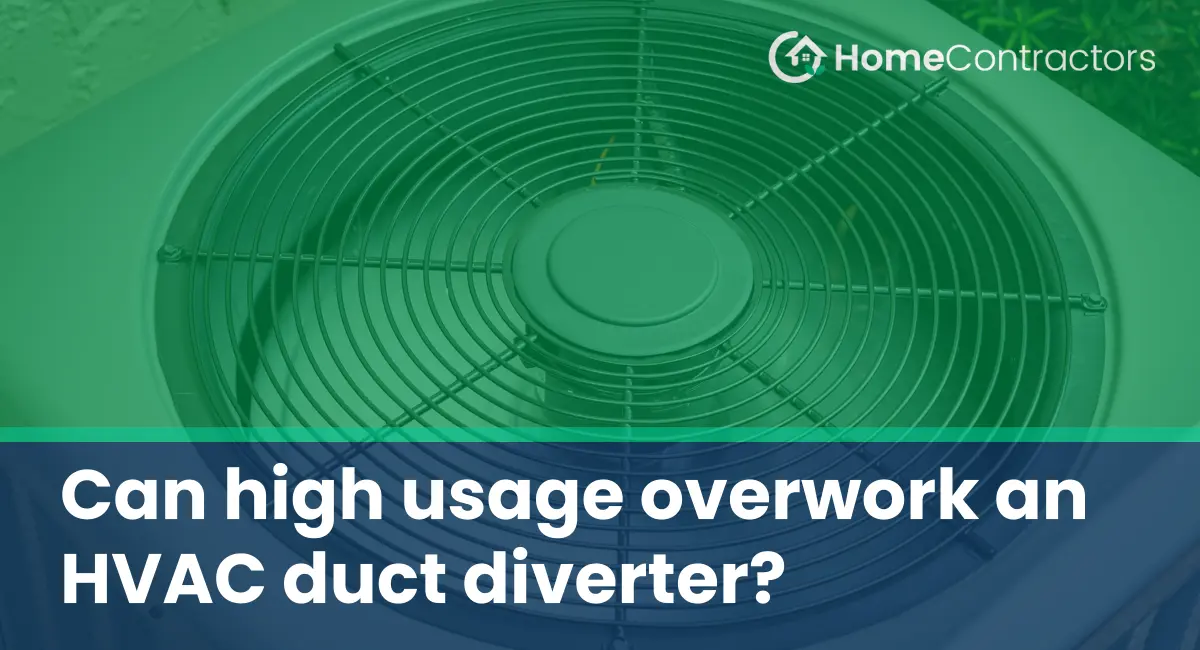Exploring the Impact of Usage on HVAC Systems
HVAC (Heating, Ventilation, and Air Conditioning) systems play a crucial role in maintaining comfortable indoor environments. These systems include various components that work together to regulate temperature, distribute air, and ensure proper ventilation. One such component is the HVAC duct diverter, which controls the flow of air throughout the system. In this article, we will explore whether high usage can overwork an HVAC duct diverter and the potential consequences of such overworking.
Understanding HVAC Duct Diverters:
To begin, let’s understand what an HVAC duct diverter is and how it functions within the system. A duct diverter is a device installed within the ductwork of an HVAC system. Its main purpose is to control the direction of airflow. By adjusting the position of the diverter, it is possible to redirect the flow of conditioned air to specific areas or zones within a building.
Function of HVAC Duct Diverters:
HVAC duct diverters are designed to provide flexibility and control over the airflow distribution. They play a crucial role in maintaining uniform temperatures throughout a building by enabling precise control of heating and cooling in specific areas. By directing air to where it is needed the most, duct diverters optimize comfort and energy efficiency.
Potential Impact of High Usage on HVAC Duct Diverters:
While HVAC duct diverters are designed to handle regular usage, prolonged periods of high usage can put excessive strain on these components. Overworking an HVAC duct diverter by continuously adjusting its position or operating it at maximum capacity for prolonged periods can lead to various issues, including:
1. Mechanical Wear and Tear:
Continuous usage can cause mechanical wear and tear on the HVAC duct diverter. The constant movement and adjustment of the diverter mechanism can result in the loosening of connections, misalignment of components, or even breakages if not properly maintained.
2. Reduced Efficiency and Performance:
Overworking an HVAC duct diverter may lead to a decrease in its overall efficiency and performance. The constant strain on the component can result in decreased airflow control, leading to imbalances in temperature distribution. This can result in hot or cold spots within the building, reducing comfort levels.
3. Increased Energy Consumption:
A duct diverter that is overworked due to high usage may not operate optimally, leading to energy inefficiency. When the diverter fails to redirect air effectively, more energy may be required to compensate for the imbalance caused. This increased energy consumption can result in higher utility bills and environmental impact.
4. System Malfunctions and Breakdowns:
An HVAC system with an overworked duct diverter is more prone to malfunctions and breakdowns. The strain on the diverter can trigger failures in other interconnected components, such as the fan motor or the thermostat. This can lead to a complete system breakdown, requiring costly repairs or replacements.
Preventing Overworking and Extending the Lifespan of HVAC Duct Diverters:
To avoid overworking an HVAC duct diverter and maximize its lifespan, it is essential to follow certain preventive measures:
1. Regular Maintenance:
Performing regular maintenance on HVAC systems, including duct diverters, is crucial. This involves inspecting and lubricating moving parts, ensuring proper alignment, and identifying and addressing any signs of wear or damage. Routine maintenance can help catch potential issues early and extend the lifespan of the diverter.
2. Optimal Usage:
Users should follow recommended usage guidelines for their HVAC system, including the operation of the duct diverter. Avoiding excessive adjustments and operating the diverter within its recommended capacity can help prevent overworking and minimize the risk of performance decline.
3. Monitoring and Upgrades:
Regularly monitor the performance of the HVAC system, paying close attention to how the duct diverter is functioning. If there are indications of reduced efficiency or ongoing issues, consider consulting an HVAC professional for inspection and potential upgrades. Upgrading to newer and more efficient diverter models, if necessary, can enhance the system’s performance and mitigate overworking concerns.
While HVAC duct diverters are designed to handle regular usage, continuous high usage can overwork these components, leading to various issues. Mechanical wear and tear, reduced efficiency, increased energy consumption, and system malfunctions are among the potential consequences of overworking an HVAC duct diverter. By following preventive measures, such as regular maintenance, optimal usage, and monitoring, users can extend the lifespan of their duct diverters and avoid the negative consequences associated with overworking.
